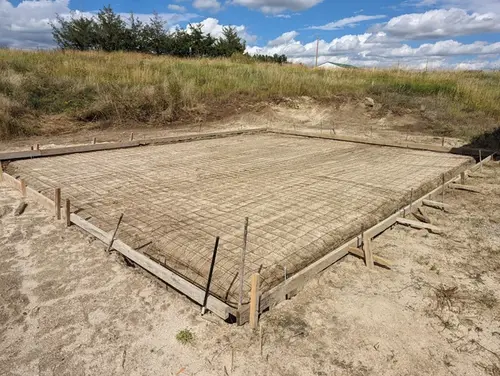What is monolithic slab ? Everything you need to know

Are you considering building a new home or laying down a foundation for an extension? If so, understanding the ins and outs of monolithic slab is crucial. From their unique construction to their various applications, there’s much to learn about these versatile structures. Let’s delve into the world of monolithic slabs and explore everything you need to know before making your next construction decision!
Definition and Explanation
When we talk about monolithic slabs in construction, we’re referring to a single, continuous concrete foundation that incorporates both the floor and footing. Unlike traditional foundations that involve separate components like footings and floor slabs poured at different times, a monolithic slab is poured all at once.
This seamless structure offers strength and stability by distributing weight evenly across the entire surface. It eliminates joints between the footing and floor, reducing the risk of cracks caused by shifting soil or settling over time. The simplicity of installation makes it a popular choice for residential buildings, garages, sheds, and small structures where cost-effective efficiency is key.
The process involves excavating the site to prepare for pouring concrete directly onto compacted soil or gravel. Reinforcement such as rebar may be added for additional support depending on the load requirements of the building. Once cured, this solid foundation provides a level base for further construction above ground level.
Types of Monolithic Slabs
One common type of monolithic slab is the floating slab, which is a single concrete layer poured directly onto the ground. This type of slab does not have footings and is ideal for areas with stable soil conditions.
Another type is the thickened edge monolithic slab, where the edges are thicker to provide additional support. This design helps distribute weight evenly and prevent cracking at the perimeter of the structure.
A third variation is the post-tensioned monolithic slab, which uses high-strength cables or rods that are tensioned after pouring to increase structural integrity. This type of slab can span longer distances without needing additional support.
Each type of monolithic slab has its unique characteristics and applications based on factors like soil composition, building load requirements, and budget constraints. It’s essential to consult with a professional to determine which type best suits your project needs before proceeding with construction.
Advantages and Disadvantages
Monolithic slabs offer several advantages when it comes to construction. They are cost-effective because they require less labor and materials compared to traditional foundation types. Additionally, monolithic slabs are known for their durability and strength, providing a solid base for the structure above.
On the flip side, one of the disadvantages of monolithic slabs is that they can be challenging to repair if any issues arise in the future. Since these slabs are poured in one continuous piece, fixing cracks or other damage may require more extensive work. Moreover, if not properly insulated during installation, monolithic slabs can lead to energy inefficiency due to heat loss through the floor.
Despite these drawbacks, many builders choose monolithic slabs for their simplicity and efficiency in certain building projects. It’s essential to weigh both the pros and cons before deciding on this foundation type for your construction needs.
Factors to Consider Before Choosing
When considering a monolithic slab for your construction project, there are several key factors to keep in mind. Assess the soil conditions of your building site as this will impact the stability and durability of the slab. Conducting soil tests can help determine if any special preparations are needed.
Another important factor is the local climate. Extreme temperatures or high moisture levels can affect how well a monolithic slab performs over time. Ensure that the chosen materials and design are suitable for the specific weather conditions in your area.
Additionally, think about the intended use of the structure. Heavy machinery or equipment may require a thicker and stronger slab to support their weight safely. Consider future expansion plans as well to ensure that the slab can accommodate any potential changes.
Budget constraints should not be overlooked. While monolithic slabs offer cost-effective solutions compared to other foundation types, it’s essential to factor in all expenses including labor, materials, and maintenance costs before making a decision on which type of monolithic slab is best suited for your project.
Common Uses
Common uses for monolithic slabs are diverse and versatile. In residential construction, they are commonly used as foundations for single-story homes or buildings with a simple design. Due to their cost-effectiveness and ease of installation, monolithic slabs are favored for smaller structures like garages, sheds, or workshops.
In commercial settings, monolithic slabs can be found in warehouses, storage facilities, and industrial buildings where a solid foundation is crucial for supporting heavy machinery or equipment. The seamless nature of monolithic slabs also makes them ideal for projects requiring large uninterrupted floor spaces such as retail stores or restaurants.
Moreover, in agricultural applications such as barns or livestock shelters, monolithic slabs provide durability and stability necessary to withstand the demands of farming operations. Additionally, outdoor spaces like patios or driveways can benefit from the strength and longevity offered by monolithic slab installations.
Installing and Maintaining
When it comes to installing a monolithic slab, proper preparation is key. The site needs to be leveled and compacted before pouring the concrete in one continuous pour. This ensures a solid foundation for the structure above.
During installation, it’s crucial to monitor the curing process closely to prevent cracking. Properly cured concrete will result in a durable and long-lasting slab that can withstand heavy loads.
Maintenance of a monolithic slab involves regular inspections for cracks or damage. Any issues should be addressed promptly to prevent further deterioration. Additionally, applying sealant periodically can help protect the surface from stains and moisture infiltration.
By following these installation and maintenance practices, you can ensure that your monolithic slab remains strong and sturdy for years to come.
Conclusion
A monolithic slab is a popular choice for building foundations due to its simplicity and cost-effectiveness. Understanding the different types, advantages, disadvantages, and factors to consider before choosing a monolithic slab can help you make an informed decision for your construction project. Whether you are constructing a residential home or a commercial building, knowing how to properly install and maintain a monolithic slab is crucial for its longevity and structural integrity. By considering these key points, you can ensure that your foundation is strong and durable for years to come.




